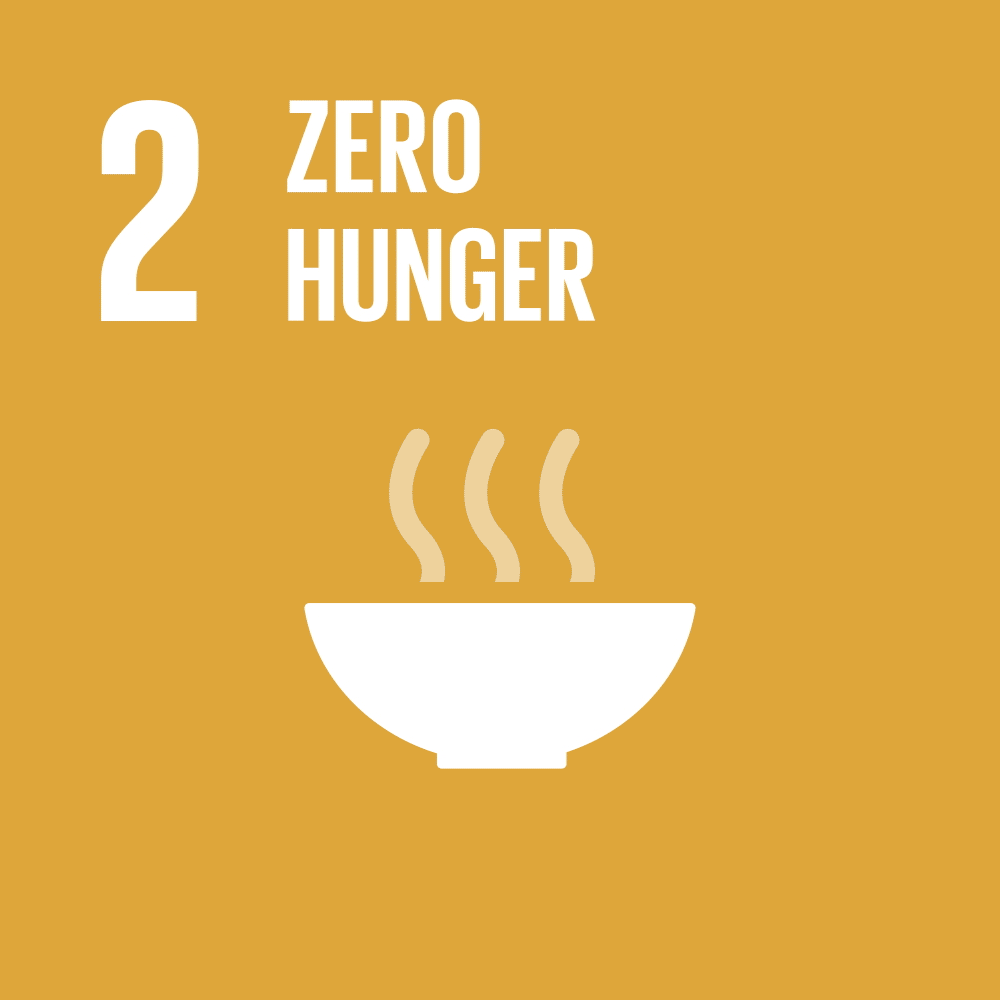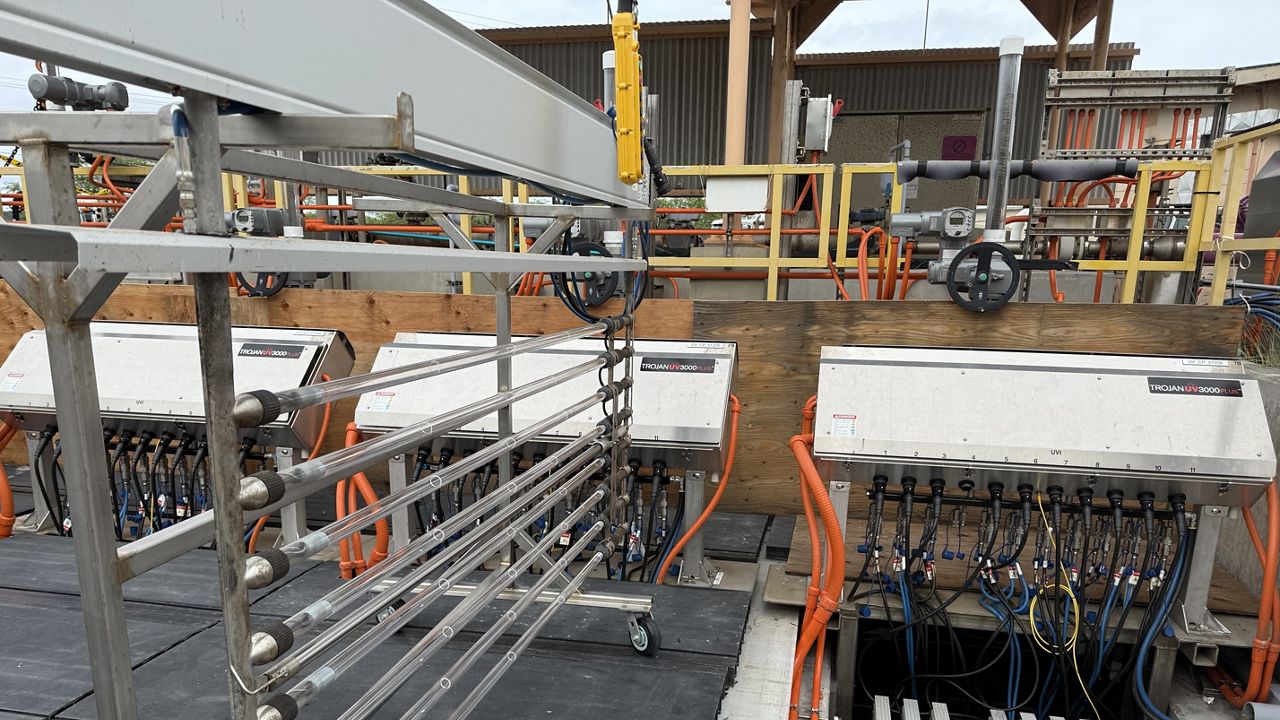
End hunger, achieve food security and improved nutrition and promote sustainable agriculture
The UN explains: "It is time to rethink how we grow, share and consume our food.
If done right, agriculture, forestry and fisheries can provide nutritious food for all and generate decent incomes, while supporting people-centred rural development and protecting the environment.
Right now, our soils, freshwater, oceans, forests and biodiversity are being rapidly degraded. Climate change is putting even more pressure on the resources we depend on, increasing risks associated with disasters such as droughts and floods. Many rural women and men can no longer make ends meet on their land, forcing them to migrate to cities in search of opportunities.
A profound change of the global food and agriculture system is needed if we are to nourish today’s 815 million hungry and the additional 2 billion people expected by 2050.
The food and agriculture sector offers key solutions for development, and is central for hunger and poverty eradication."
You can find many more visuals and statistics on hunger and undernourishment, micronutrient deficiencies and obesity at the Our World in Data entries on these topics. Our entries on famines, food per person, and diet compositions also tie closely to these topics.
The UN has defined 8 Targets and 13 Indicators for SDG 2. Targets specify the goals and Indicators represent the metrics by which the world aims to track whether these Targets are achieved. Below we quote the original text of all Targets and show the data on the agreed Indicators.
Target 2.1: Universal access to safe and nutritious food
UN definition: End hunger, achieve food security and improved nutrition and promote sustainable agriculture.
Prevalence of undernourishment
Definition: Indicator 2.1.1 is the prevalence of undernourishment.
The prevalence of undernourishment is the share of the population with a caloric intake which is insufficient to meet minimum requirements for a healthy life. Minimum requirements vary by individual based on age, gender, weight, activity levels and so vary by country depending on the demographics of its population. Distributions for individuals are taken into account for this measure.
Goal: End hunger by 2030. This means eliminating undernourishment for all.
More research: Further data and research can be found at the Our World in Data entry on Hunger and Undernourishment.
Additional charts:
Prevalence of undernourishment by region
Global number of people undernourished
Prevalence of food insecurity
Definition: Indicator 2.1.2 is the prevalence of moderate or severe food insecurity in the population, based on the Food Insecurity Experience Scale (FIES).
Food insecurity data of the FEIS (shown here) is based on survey data which relates to the occurrence of several typical experiences and conditions associated with food insecurity.
Goal: Achieve food security by 2030. This means ending moderate and severe food insecurity for all.
More research: Further data and research can be found at the Our World in Data entry on Hunger and Undernourishment.
Additional charts:
Prevalence of severe food insecurity
Number of people with severe food insecurity by region
Target 2.2: End all forms of malnutrition
UN definition: By 2030, end all forms of malnutrition, including achieving, by 2025, the internationally agreed targets on stunting and wasting in children under 5 years of age, and address the nutritional needs of adolescent girls, pregnant and lactating women and older persons.
Prevalence of childhood stunting
Definition: Indicator 2.2.1 is the prevalence of stunting among children under 5 years of age.
Stunting represents severe malnutrition as is apparent when a child has too low height-for-age. A child is stunted when their height-for-age is 2 or more standard deviations below the median of the World Health Organization (WHO) Child Growth Standards.
Goal: By 2030 end all forms of malnutrition, including achieving, by 2025, the internationally agreed targets on stunting and wasting in children under 5 years of age.
The intermediate target is a reduction in the prevalence of stunting by 40% by 2025 (from 2012 levels).
More research: Further data and research can be found at the Our World in Data entry on Hunger and Undernourishment.
Additional charts:
Prevalence of childhood stunting by sex
Prevalence of childhood malnutrition (wasting or overweight)
Definition: Indicator 2.2.2 is the prevalence of malnutrition among children under 5 years of age, by type (wasting and overweight).
Being underweight (wasting) or overweight are both defined as malnourished:
A child is defined as "wasted" if their weight-for-height is more than 2 standard deviations below the median of the WHO Child Growth Standards.
A child is defined as "overweight" if their weight-for-height is more than 2 standard deviations above the median of the WHO Child Growth Standards.
Goal: By 2030 end all forms of malnutrition, including achieving, by 2025, the internationally agreed targets on stunting and wasting in children under 5 years of age, and address the nutritional needs of adolescent girls, pregnant and lactating women and older persons.
This targets an elimination of wasting, and the prevalence of children being overweight by 2030.
More research: Further data and research can be found at the Our World in Data entries on Hunger and Undernourishment, Obesity and Micronutrient Deficiency.
Additional charts:
Adult obesity
Prevalence of anemia in pregnant women
Prevalence of anemia in women of reproductive age
Prevalence of anemia in children
Target 2.3: Double the productivity and incomes of small-scale food producers
UN definition: By 2030, double the agricultural productivity and incomes of small-scale food producers, in particular women, indigenous peoples, family farmers, pastoralists and fishers, including through secure and equal access to land, other productive resources and inputs, knowledge, financial services, markets and opportunities for value addition and non-farm employment.
Production per labour unit
Definition: Indicator 2.3.1 is the volume of production per labour unit by classes of farming/pastoral/forestry enterprise size.
This is reported here in the SDG Tracker as the economic value added per agricultural worker.
Goal: By 2030 double the average productivity of food producers.
This would require a doubling in agricultural value added per worker by 2030.
More research: Further data and research can be found at the Our World in Data entry on Yields and Land Use in Agriculture and Employment in Agriculture.
Income of small-scale food producers
Definition: Indicator 2.3.2 is the average income of small-scale food producers, by sex and indigenous status.
Goal: By 2030 double the average income of small-scale food producers.
More research: Further data and research can be found at the Our World in Data entries on Food Prices and Employment in Agriculture.
Target 2.4: Sustainable food production and resilient agricultural practices
UN definition: By 2030, ensure sustainable food production systems and implement resilient agricultural practices that increase productivity and production, that help maintain ecosystems, that strengthen capacity for adaptation to climate change, extreme weather, drought, flooding and other disasters and that progressively improve land and soil quality.
Sustainable food production
Definition: Indicator 2.4.1 is the proportion of agricultural area under productive and sustainable agriculture.
It is currently not clear or well-defined what constitutes productive and sustainable agricultural practice.
Goal: By 2030 ensure sustainable food production systems and implement resilient agricultural practices that increase productivity and production, that help maintain ecosystems, that strengthen capacity for adaptation to climate change, extreme weather, drought, flooding and other disasters and that progressively improve land and soil quality.
More research: Further data and research can be found at the Our World in Data entry on Yields and Land Use in Agriculture, and comparison of the environmental impact of organic vs. conventional agriculture.
Target 2.5: Maintain the genetic diversity in food production
UN definition: By 2020, maintain the genetic diversity of seeds, cultivated plants and farmed and domesticated animals and their related wild species, including through soundly managed and diversified seed and plant banks at the national, regional and international levels, and promote access to and fair and equitable sharing of benefits arising from the utilization of genetic resources and associated traditional knowledge, as internationally agreed.
Genetic resources in conservation facilities
Definition: Indicator 2.5.1 is the number of plant and animal genetic resources for food and agriculture secured in either medium- or longterm conservation facilities.
This is measured here as the number of accessions of plant and animal breeds which are stored in secure medium or long-term facilities.
Goal: Maintain the genetic diversity of seeds, cultivated plants and farmed and domesticated animals and their related wild species, including through soundly managed and diversified seed and plant banks at the national, regional and international levels.
This target is set for the year 2020, unlike most SDGs which have a target date of 2030.
Local breeds at risk of extinction
Definition: Indicator 2.5.2 is the proportion of local breeds classified as being at risk, not at risk or at unknown level of risk of extinction
This measure is shown as the number of local breeds in a given country at risk of extinction.
Goal: Maintain the genetic diversity of seeds, cultivated plants and farmed and domesticated animals and their related wild species, including through soundly managed and diversified seed and plant banks at the national, regional and international levels.
This target is set for the year 2020, unlike most SDGs which have a target date of 2030.
Target 2.A: Invest in rural infrastructure, agricultural research, technology and gene banks
UN definition: Increase investment, including through enhanced international cooperation, in rural infrastructure, agricultural research and extension services, technology development and plant and livestock gene banks in order to enhance agricultural productive capacity in developing countries, in particular least developed countries.
Agriculture orientation index
Definition: Indicator 2.A.1 is the agriculture orientation index for government expenditures.
The agriculture orientation index (AOI) is the agriculture share of government expenditures, divided by the agriculture share of GDP.
An AOI larger than 1 means the agriculture section receives a higher share of government spending relative to its economic value.
An AOI smaller than 1 reflects a lower orientation to agriculture.
Goal: By 2030 Increase investment, including through enhanced international cooperation, in rural infrastructure, agricultural research and extension services, technology development and plant and livestock gene banks in order to enhance agricultural productive capacity in developing countries, in particular least developed countries.
Official flows to agriculture
Definition: Indicator 2.A.2 is total official flows (official development assistance plus other official flows) to the agriculture sector.
This is given as the total development assistance for agriculture received by a given country each year.
Goal: By 2030 Increase investment, including through enhanced international cooperation, in rural infrastructure, agricultural research and extension services, technology development and plant and livestock gene banks in order to enhance agricultural productive capacity in developing countries, in particular least developed countries.
Target 2.B: Prevent agricultural trade restrictions, market distortions and export subsidies
UN definition: Correct and prevent trade restrictions and distortions in world agricultural markets, including through the parallel elimination of all forms of agricultural export subsidies and all export measures with equivalent effect, in accordance with the mandate of the Doha Development Round.
Agricultural export subsidies
Definition: Indicator 2.B.1 is the value of agricultural export subsidies.
Goal: By 2030 correct and prevent trade restrictions and distortions in world agricultural markets, including through the parallel elimination of all forms of agricultural export subsidies
This target requires an elimination of agricultural export subsidies by 2030.
Target 2.C: Ensure stable food commodity markets and timely access to information
UN definition: Adopt measures to ensure the proper functioning of food commodity markets and their derivatives and facilitate timely access to market information, including on food reserves, in order to help limit extreme food price volatility.
Food price anomalies
Definition: Indicator 2.C.1 is the indicator of food price anomalies.
Food price anomalies can be measured using the domestic food price volatility index.
Domestic food price volatility index measures the variation (volatility) in domestic food prices over time - this is measured as the weighted-average of a basket of commodities based on consumer or market prices. High values indicate a higher volatility (more variation) in food prices.
Goal: By 2030 adopt measures to ensure the proper functioning of food commodity markets and their derivatives and facilitate timely access to market information, including on food reserves, in order to help limit extreme food price volatility.
More research: Further data and research can be found at the Our World in Data entry on Food Prices.





























































